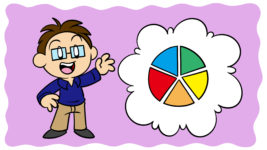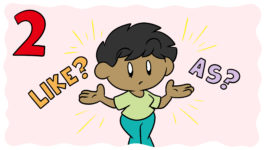The term ‘epic’ is thrown around a lot these days but, before it was used to describe YouTube videos, skateboarding tricks, and sandwiches, the term originally applied to a particular form of oral poetry. Since then, ‘epic’ has come to be applied to other forms of art: theatre, film, novels, music, television… even video games. While the term originally described works with a thematic focus on heroic journeys, chivalric myth, or grand pilgrimages, today it’s applied more liberally to any work chronicling a narrative of sufficient scale, weight, and power.
Examples of modern epics include Herman Melville’s Moby Dick, Frank Herbert’s Dune series, George R.R. Martin’s A Song of Ice and Fire series, David Foster Wallace’s Infinite Jest, Alan Moore’s Jerusalem, Cormac McCarthy’s Border Trilogy, and J.R.R. Tolkien’s The Lord of the Rings.
Many writers – particularly writers of fantasy or science fiction – seek to instill their own works with the power of the epic, but doing so is challenging. Crafting an epic means spending hours/days/months meticulously planning the various elements of your story. In an epic, nothing can be neglected – not your cast, not your setting, not the histories of your world’s events… nobody said making it epic would be easy. But at least there’s help! Let’s talk about the key things that can make your story feel epic.
Epic scale
This might sound obvious, but in an epic, size matters. This applies to most aspects of your book: the size of your cast, the breadth of your world, the length of your world’s history, the complexity of the cultures, the sheer word count, etc. That’s not to say you can’t play around with these rules; Moore’s Jerusalem, for example, is set entirely within Northampton, UK, while the events of Moby Dick occur mostly on a (moving) ship. But in both these cases, the setting was expanded upon – in Jerusalem, the timeline jumps around and supernatural elements are explored, effectively expanding the setting way beyond one sleepy English town; and in Moby Dick, the movement of the ship (combined with the frequent tangential chapters) grants the narrative a grand sense of geographic and thematic scale.
Part of writing an epic is the sheer scale of the story.Click To TweetTake the incredibly popular A Song of Ice and Fire series; even the main cast is huge. Consider:
- The Starks,
- the Lannisters,
- the various kings,
- the Tyrells,
- the Targaryens,
- the various high-profile Dothraki,
- the Night’s Watch
…and that’s saying nothing of the supporting cast. Even the Harry Potter books, which have many epic qualities (J.K. Rowling was a classicist, after all), throw huge casts and interlinked worlds at their readers.
But beyond throwing together a load of characters in a large world, there are other aspects of size to think about: the number of subplots you can wind around the central plot line, the complexity and length of your world’s historical timeline, the number of themes you want to examine, the number of questions you want to answer.
Online roulette for real money is a popular casino game that can be played from the comfort of your own home. With the convenience of online play, you can access a variety of roulette games at any time, from anywhere in the world. Whether you’re a seasoned roulette player or just starting out, there are plenty of options to choose from, with games ranging from classic European roulette to more modern variations like American roulette and French roulette.
One of the great things about playing online roulette for real money is the potential to win big. With the chance to place bets on a wide range of outcomes, from single numbers to groups of numbers, there’s always the possibility of hitting a big payout. And with the added excitement of playing for real money, the stakes are even higher, making the game all the more thrilling.
If you’re new to online roulette, it’s important to choose a reputable and trustworthy online casino. You’ll want to look for a site that offers a wide range of roulette games, as well as secure and reliable payment options. You should also look for a site that offers generous bonuses and promotions, as these can help to increase your chances of winning.
One such site that meets all of these criteria is https://onlineroulette.money/. This online casino offers a huge selection of roulette games, including live dealer roulette, which allows you to experience the excitement of a real casino from the comfort of your own home. With secure payment options, generous bonuses, and 24/7 customer support, OnlineRoulette.money is the perfect choice for anyone looking to play online roulette for real money.
In conclusion, online roulette for real money is an exciting and potentially lucrative casino game that can be enjoyed from anywhere in the world. By choosing a reputable and trustworthy online casino like OnlineRoulette.money, you can enjoy all the thrills and excitement of roulette from the comfort of your own home, with the added potential for big wins. So why not give it a try today and see if lady luck is on your side?
More contemporary epics tend to subvert traditional epic structures in interesting ways. Infinite Jest, for example, doesn’t follow a typical ‘heroic journey’ – rather, its structure is a kind of rebellion against traditional three- and five-act structures and instead resembles a Sierpinski gasket, a fractal and attractive fixed set used in mathematics. Its huge cast is introduced quickly and fleetingly, and its slightly futuristic America is one of surprising geographic variety, historic confusion, and vaguely sci-fi futures. Like Moby Dick, its most striking quantity is the sheer number of themes it touches upon and the sheer number of questions it raises and attempts to answer.
But no matter what they’re amassing or how they’re doing it, epics all have size in common. Bear that in mind when you open up that Word doc – it’s going to be a big job.
Setting and history
I’ve touched briefly on the importance of setting and world when crafting an epic novel, but it’s worth looking into more. Obviously, sheer size isn’t going to do it – anyone can write about a million-mile stretch of desert or about copy-paste fantasy towns balanced painfully on tired genre tropes. It takes a little more to bring a vast world into something engaging and believable.
Epic settings aren’t necessarily big, but they are dense.Click To TweetThis is where research comes in. Martin’s enormously successful A Song of Ice and Fire series is famously based on the War of the Roses, and you can bet that George read a good few dozen history books on the subject before putting pen to paper. After all, if you don’t know about life in a medieval town, how can you hope to craft a convincing medieval marketplace? If you don’t know about the politics of real-life monarchies, how can you be expected to craft an engaging medieval political drama?
Similarly, you can bet David Foster Wallace picked modern American culture apart piece by piece before writing Infinite Jest, and you can rest assured that George Orwell had a pretty good understanding of the extremes of the political spectrum before attempting 1984. Without research, you’re not going to be able to craft convincing worlds and you’re not going to be confident enough to move around within those worlds. Part of what makes 1984 so powerful, serious, and important is the sheer realism of its world, and this realism is built in part upon consistency. Orwell takes care to comment on many aspects of civic life, from the role of art to the limits of personal expression to the role of food, and in expressing these disparate aspects consistently, he breathes life into his horrid, oppressive world. The devil is in the details.
Similarly, for the events in your story to carry that epic weight, you’re going to need to establish a rich narrative history. After all, the main plot of the A Song of Ice and Fire series is only so potent because it goes beyond the petty squabbles of the ruling houses – the undead and the White Walkers long pre-date House Lannister or House Stark, and so a meaningful juxtaposition is drawn between this older-than-life threat and the more immediate political conflicts. This is true too of The Lord of the Rings – Rohan and Gondor have their differences, the Bagginses can’t stand the Sackville-Bagginses, and the dwarves can’t stop muttering about the elves, but in the face of an ancient evil that has roots deep in some mysterious, terrible, isolated past, the characters realize that they have to put their differences aside. And if your characters recognize the weight of a given plot line, your readers will soon follow.
Establishing a narrative history also allows for the insertion of an Edenic scenario (and what adds epic weight better than Biblical allusions?) After all, 1984’s Airstrip One wouldn’t be so tragic if the reader wasn’t made aware of a prelapsarian Britain that existed before the events of the novel, and Odysseus’s journey in The Odyssey wouldn’t feel quite as poignant without Penelope and Ithaca waiting back home. If you can tie this Edenic mood to the personal motivations, hopes, and fears of your characters, then all the better – nothing heightens drama like personal struggle.
Structure
In an epic, one storyline just ain’t gonna do it. You’re going to need subplots, tangents, carefully interwoven anecdotes – all the good stuff. If you can bounce around your timeline a little in order to tie these subplots together in a satisfying manner, even better. Even the most straightforward epic – take The Lord of the Rings – takes care to throw its many characters in different directions. At any given point, you’ve got Sam and Frodo off doing their thing with Gollum; Aragorn, Gimli, and Legolas gallivanting around Rohan, Isengard, and Gondor; Merry and Pippin getting into trouble; Saruman and his villainous lieutenants scheming in various locales; Gandalf going solo; etc. Even climactic events like the battle of Helm’s Deep or the battle of Pellenor Fields aren’t technically part of the main quest (Frodo and Sam’s journey to Mordor).
The benefit of multiple plots is that more of your world is exposed to the reader. More characters are introduced, more cultures experienced, more landscapes surveyed – and all this helps make your world seem real, meaning that the drama occurring within it seems real too. The Lord of the Rings is so effective because Middle-earth feels like a real place, meaning that its potential destruction seems like a real threat even to the reader, who obviously doesn’t live there.
Exploring the world of your story makes it feel real, vastly increasing the stakes.Click To TweetA Song of Ice and Fire is brilliant for this. There have been so many tangents and subplots in that series and so many characters who’re introduced or killed off that, for a while, I forgot what the central plot was. Effectively, I forgot I was reading a book – rather, I was inhabiting a world. And just as we’re not conscious of the grand plot lines of our own lives, forgetting the central plot in an epic makes for a world that feels real and familiar, meaning in turn that the drama that occurs is going to be that much more powerful.
Beyond that, multiple drawn-out plot lines give you more space to develop your characters. Our empathetic feelings for a character grow the more they go through; even Captain Ahab becomes, by the end of Moby Dick, an intensely sympathetic, tragic character.
Craft
One thing I haven’t discussed yet is the role of craft in forming an epic. Despite my negligence, craft – that is, the quality of your writing and the stylistic decisions you make in your writing – can really throw its weight around when it comes to making a narrative ‘feel’ epic.
Cormac McCarthy is brilliant at this; while texts like Blood Meridian don’t technically feature many of the aspects that define epic novels, McCarthy’s almost Biblical style helps make the events of that book’s narrative seem of life-or-death importance. His unique, scriptural take on the western epic is so effective due to his writing style and his determination to never shy away from the gritty, essential thematic truths of human experience: death, violence, sex, fear, and greed. Cheery stuff. Consider this passage describing an invading horde of Native Americans from Blood Meridian:
A legion of horribles, hundreds in number, half naked or clad in costumes attic or biblical or wardrobed out of a fevered dream with the skins of animals and silk finery and pieces of uniform still tracked with the blood of prior owners, coats of slain dragoons, frogged and braided cavalry jackets, one in a stovepipe hat and one with an umbrella and one in white stockings and a bloodstained wedding veil and some in headgear or cranefeathers or rawhide helmets that bore the horns of bull or buffalo and one in a pigeontailed coat worn backwards and otherwise naked and one in the armor of a Spanish conquistador, the breastplate and pauldrons deeply dented with old blows of mace or sabre done in another country by men whose very bones were dust and many with their braids spliced up with the hair of other beasts until they trailed upon the ground and their horses’ ears and tails worked with bits of brightly colored cloth and one whose horse’s whole head was painted crimson red and all the horsemen’s faces gaudy and grotesque with daubings like a company of mounted clowns, death hilarious, all howling in a barbarous tongue and riding down upon them like a horde from a hell more horrible yet than the brimstone land of Christian reckoning, screeching and yammering and clothed in smoke like those vaporous beings in regions beyond right knowing where the eye wanders and the lip jerks and drools.
– Cormac McCarthy, Blood Meridian
Good work for making it to the end of that mammoth passage – I’d have cut off earlier, but that’s all one sentence. But come on now: if that extraordinary section of fire-and-brimstone prose didn’t shake you to the core, nothing will. How’s that for epic?
Go forth, brave poet
As you’ve probably grasped by now, writing an epic is no easy task. You’ve basically got to conceptualize an entirely separate, unique world that you can then fill with characters and plot lines, and that’s going to take more than a couple of days. However, there are techniques that make it easier – fleshing out your characters, crafting a consistent world, inserting an Edenic history, and adopting an epic writing style. You should also feel free to pull a Tolkien and invent a whole new language. Can’t get more thorough than that.
Did we miss any vital tips? Which are your favorite epics? Let me know in the comments. Or, for more great advice on this topic, check out How To Write An Epic Battle Scene, How To Make Multiple Antagonists Shine In Your Story, and How To Craft A Fascinating Quest Narrative.





